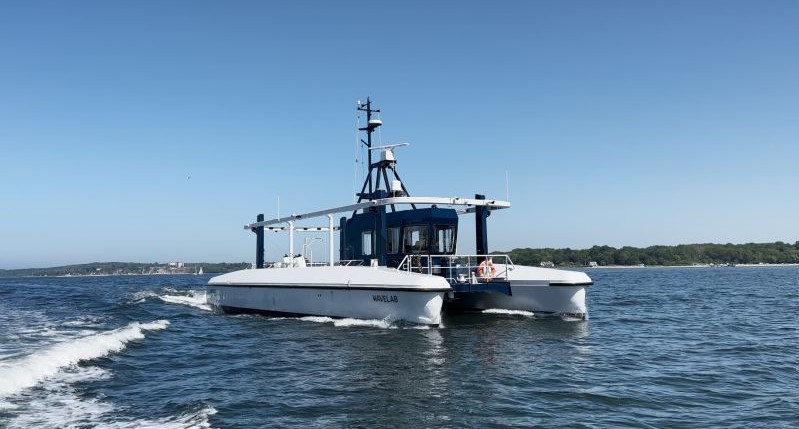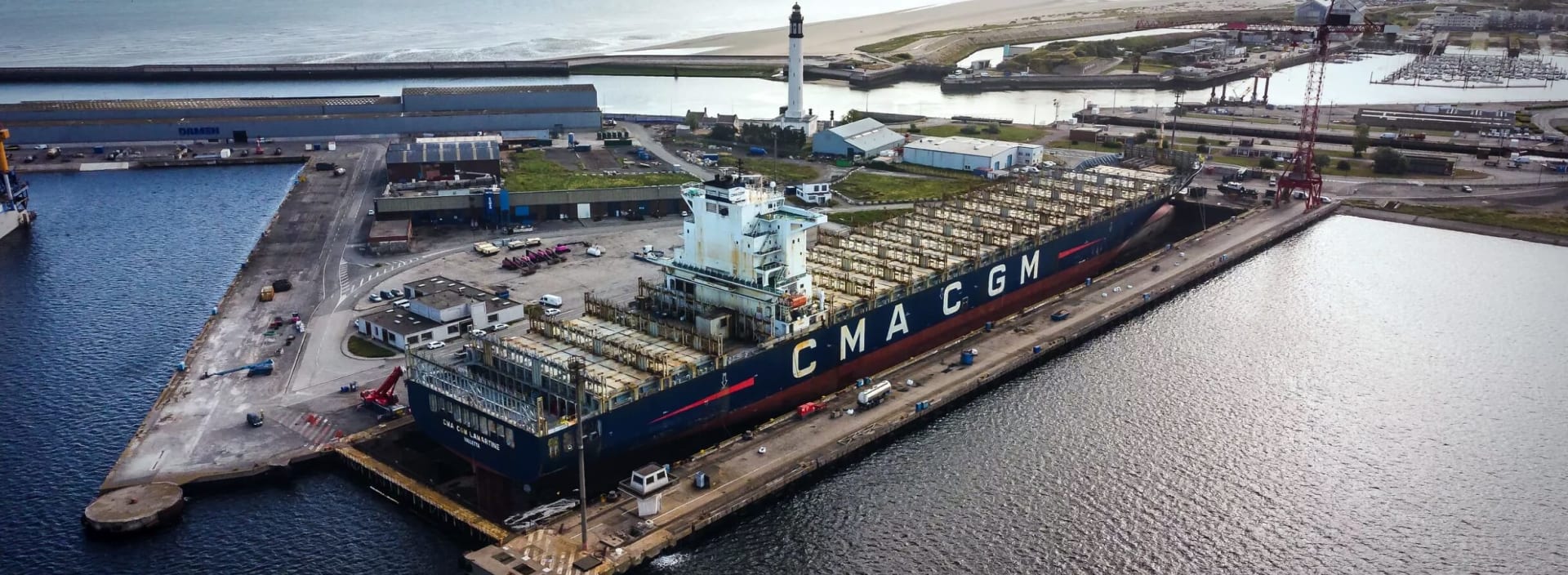Anschutz prepares for tests with autonomous navigation

The MV Wavelab was handed over to the CAPTN project and will start research trials shortly.
A unique test field for autonomous ships is currently being built on the Kiel Fjord. After the MV Wavelab was christened at the end of February 2023, the ship was tested on the Kiel Fjord and has recently been handed over to the project partners of the Kiel "Clean Autonomous Public Transport Network" (CAPTN) Initiative.
The MV Wavelab is the largest research ship for autonomous shipping in Germany in accordance with class notations and has fully type-approved equipment on board. From the Gebr. Friedrich shipyard in Kiel, the Wavelab has sailed into the harbour of the naval arsenal, where a large test field is being set up in which the Wavelab will conduct semi-automated and autonomous sailing tests.
The test field will be used to advance future projects such as the development of technology for shipping and public transport of the future, assistance systems and automation for more safety, as well as remote-controlled and autonomous ships for more efficiency in shipping. Furthermore, it will be used for the testing of intermodal transport chains and innovative, emission-free energy systems. As one of the industry partners, Anschütz takes a leading role in designing future navigation systems.
"We are delighted to have reached the next milestone in the project with the handover of the Wavelab," said Daniel Sommerstedt, Project Manager at Anschütz. "With the Wavelab and the digital test field, we get a unique maritime environment right on our doorstep to develop the navigation and maritime surveillance solutions of the future."
The vision of the CAPTN Initiative is to develop autonomous, safe and sustainable public transport systems. As CAPTN strives to connect the east and west banks of Kiel with autonomous, low-emission passenger ferries, a network of companies and universities develop and research necessary technologies within a number of individual projects funded by the Federal Ministry for Digital and Transport (BMDV). Anschütz partners in the “Förde Areal” project with the University of Applied Sciences of Kiel, the Christian-Albrechts-Universität zu Kiel (CAU), FuE-Zentrum FH Kiel GmbH, the Science Center (WiZe) Kiel GmbH and ADDIX GmbH.
The next steps in the project consist of the installation and integration of the research equipment and data collection by different sensors in defined scenarios. This involves radar, video and light detection and ranging (LiDAR) sensors as well as the validation and optimisation of systems for the automatic detection and classification of objects.
"The Kiel Fjord offers optimal conditions with many ships of different sizes and types. With the data obtained, we want to advance the development and evaluation of situational awareness, assistance systems and automation, as well as digital twin and adaptive communication together with other project partners," said Sommerstedt.
Other focal points in the upcoming weeks will be the testing of continuous data transmission under real conditions in the digital test field as well as the equipment and networking of the Shore Control Centre, which is currently being set up at Anschütz. A functioning and safe immediate interaction between the Shore Control Centre and the Wavelab is necessary to perform initially manned, but remotely controlled sailing tests on the test field.
"First and foremost, we are working on solutions for assistance systems and automated navigation that support navigators and make maritime traffic safer," said Sommerstedt. "We do not just want to pursue innovation here that exists only in theory, but we additionally strive to obtain approval for seagoing vessels. It is about making navigation smart, and thus, making shipping safer and more flexible."
The Anschütz Synapsis NX Integrated Navigation System is the foundation of the Wavelab's autonomous navigation. This includes radars, electronic chart and situational displays, intelligent data and alarm management, as well as autopilot and orbit control systems. The system also integrates optical sensors and CCTV cameras, and enables data exchange with the shore-based control centre for monitoring and remote control of the Wavelab, which is also being equipped by Anschütz.

